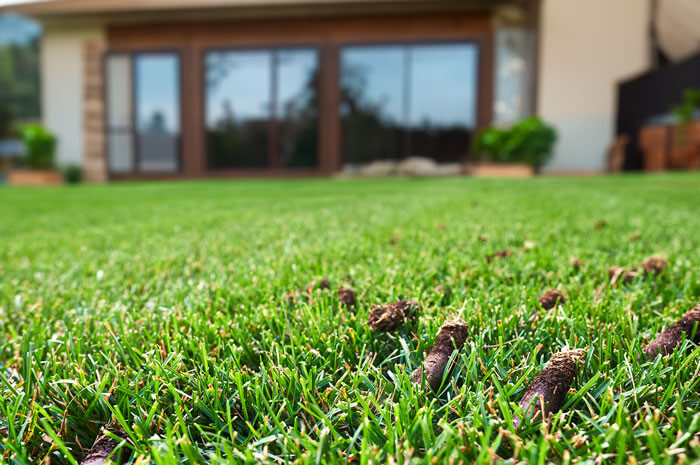
Your lawn and landscape depends on your sprinkler system to ensure healthy growth throughout the year. A few seasonal maintenance tasks can keep your system running smoothly. Here is a quick seasonal checklist to make sure your system is in tip top shape.
Summer
Hot summer temps make adequate water essential. A quick overview of your system can catch problems before they become a bigger hassle. “We recommend checking your system about once a month, especially during high-use times of the year,” says Alexis Deasy, senior marketing communications manager at Toro. “Things can change as the season progresses.”
- Check sprinkler heads to make sure there is no new damage. Assure that they are adjusted correctly and reaching the areas they’re supposed to.
- Take a look at the lawn. If there are any dry areas, or if water is pooling in certain locations, you may need to adjust run times, or assure that the sprinklers have the correct arc and radius settings.
- Check your rain sensor. Run a quick test to make sure the system is shutting off when it rains.
Fall
- Your landscape and plantings need water late into the fall to prepare for winter. The moisture is especially important for newly planted grass, shrubs, perennials, and trees. Be sure to give these areas a good long drink before cold weather sets in.
- Pay attention to the weather, making sure you’re not running your system when it is too cold. The Toro Rain Sensor with Freeze Detection shuts down your system, not only when it rains, but when temperatures drop near freezing.
- As the season winds down, it’s time for winter prep. If you live in a colder climate, your sprinkler system will need to be winterized, removing all the water from the pipes. Water left in your system could freeze, cracking pipes and damaging sprinklers. Contact your local irrigation installer to help flush out your system.
Spring
- Check water pressure. Your sprinkler system depends on consistent water pressure to run efficiently. Most home water pressure rates are in the 40 – 80 PSI range. Check your pressure at the beginning of the season to make sure you’re in the correct range.
- When you’re getting your system ready for the season, turn the water on slowly. This can help reduce surging and limit the chance of damage occurring.
- Flush your system. Remove the last sprinkler on each zone and run that zone for a few minutes. This will remove any debris that may have built up. Be sure to replace each sprinkler after flushing.
- Check your controller to make sure it is in good working order. If your model is battery powered, now is a good time to replace the batteries. Review the days and times programmed for each Zone and update if watering needs have changed.
- Run each sprinkling zone and inspect all your sprinkler heads and drip emitters. Look for cracks and leaks and replace any broken or damaged sprinklers, tubes and emitters.
- Check each sprinkler to make sure the arc and radius are adjusted correctly.
- Check your rain sensor to make sure it’s positioned properly and that no damage has occurred over the winter.
Need more information and tips? Check out the helpful how-to videos on our website. If it’s time to call in an expert, your local, professional irrigation installer can help with everything from basic maintenance to replacement.



